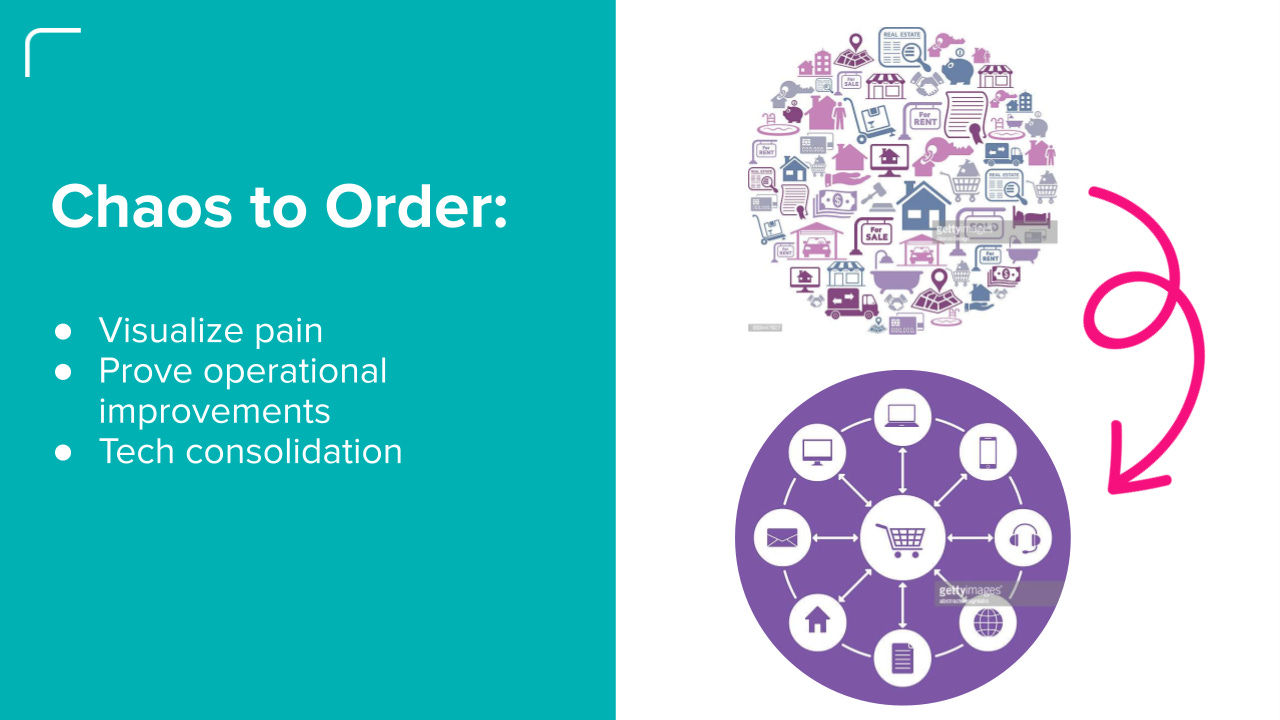5 Steps to Establish a Clear POV
70% of B2B buyers said they are more likely to engage with a brand offering a clear, distinctive perspective on an industry problem or solution.
Thanks for being one of over 150,000 forward-thinking GTM Leaders who subscribe to this weekly research note.
This week’s edition includes:
GTM Research: 5 Steps to Establish a Clear POV
Spotlight: GTM Agencies
GTM Partners’ Analyst Hour: Unlocking AI for 2025 Planning on December 11, 2024
GTM Research: 5 Steps to Establish a Clear POV
One of the one-off projects we love to help companies with is establishing a clear point of view.
It’s part of Pillar 3: Brand and Demand.
Once you’ve completed Pillar 1 (defining your Total Relevant Market) and Pillar 2 (identifying highest-value products and features and sequencing your investment in them), it’s time to define your point of view.
Whether you’re a new startup or a seasoned company that’s evolved over time, refining your POV can provide clarity, align your teams, and energize your brand.
Don’t Take Our Word For It: Stats on the Importance of a Strong POV
B2B buyers value differentiation: 70% of B2B buyers said that they are more likely to engage with a brand that offers a clear, distinctive point of view or perspective on an industry problem or solution. (Source: McKinsey & Company, B2B Decision Maker Survey)
Differentiation is key to winning in competitive markets: 91% of B2B executives say differentiation is the top priority when choosing a vendor. A strong POV helps brands stand out from the competition by highlighting what makes them different—not just in terms of products but in terms of their perspective and approach to solving industry problems. (Source: McKinsey & Company, 2020)
Brand Clarity Drives Trust: 72% of B2B buyers claim that clear communication from vendors is critical to building trust, and a strong, well-defined POV helps clarify the company’s purpose, mission, and value. (Source: Demand Gen Report, 2020)
Brand purpose drives growth: Companies with a clearly defined brand purpose outperform their competitors by 2.5x in terms of growth. This is because they have a stronger emotional connection with customers, which is often rooted in a well-defined POV that reflects shared values and goals. (Source: Kantar, BrandZ 2021)
POV deepens customer advocacy: B2B companies with a clear, consistent POV are 50% more likely to turn customers into advocates. Customers are more likely to share and promote brands that have a strong stance on industry issues and challenges, aligning with their own values and objectives. (Source: Salesforce Research, 2020)
Step 0: Diagnose the POV Problem
Before building a strong POV, you need to understand where you stand today. This exercise helps you determine if a POV overhaul is necessary.
Start by asking everyone in your company to articulate the mission, vision, purpose, and elevator pitch. If your responses are all aligned and succinctly cover all your products, markets, and services, congratulations! You’re on the right track and can skip ahead.
However, if you encounter discrepancies or confusion around the answers—especially if your organization has grown and diversified over time—it’s time to clarify your POV.
The key here is to be honest about where you stand today. If there’s ambiguity or lack of consensus internally, chances are your POV is not as clear externally. This is where the real work begins.
Step 1: Clarify the Problem from the Voice of the Customer
At the heart of every compelling POV is a deep understanding of the problem your company solves—from the customer’s perspective.
Too often, businesses make the mistake of framing the problem from their own point of view, focusing on their features, tools, or technology.
But customers don’t buy products; they buy solutions to their problems.
Questions to ask:
What problem are we solving? Is this problem framed from the customer’s point of view, or is it framed from a technical standpoint?
How meaningful is this problem to their business? Does this problem prevent them from achieving their goals or driving performance?
Is this problem significant enough to drive change? Will solving this problem require an organizational shift, and is the pain level high enough to justify that change?
For example, let’s say your company specializes in data integration tools. A typical POV might be: “We help companies integrate their siloed data to improve operational efficiency.” While technically accurate, this doesn’t speak to what’s keeping your customers up at night.
A better way to frame this might be: “We help organizations break down silos and ensure everyone has access to the right data at the right time, enabling faster, smarter decision-making across teams.”
The focus is on the business problem (siloed data and inefficiency), not the technical solution (data integration). This shift in language makes the problem more relatable and urgent to your customers.
Step 2: Name the Enemy
Great brands don’t just describe the problem—they also identify what they’re up against.
This could be direct competition, outdated technologies, or legacy systems that hinder progress.
Naming the enemy gives you a rallying cry and helps everyone in your organization understand what you’re fighting for.
Ask your teams: Who or what is our enemy today? This could be a legacy system, a competitor, or even a flawed mindset in your target market. The key is to define your enemy in terms your audience can relate to, not just as a competitor’s brand name. Your enemy might be things like inefficiency, complexity, or stagnation.
For example, if you’re a SaaS company offering workflow automation tools, your enemy could be the manual, time-consuming processes that plague businesses, rather than just a competitor in the space. This approach elevates your brand’s purpose beyond features and gives your POV a sense of urgency and direction.
Step 3: State Your Purpose
A strong POV doesn’t just focus on the problem—it also highlights your company’s purpose and vision for the future.
This is your North Star: your reason for existing beyond the products you sell or the services you offer.
Your purpose should resonate with your team and customers, guiding everything from product development to marketing and communication.
Look to iconic brands for inspiration. Here are some examples of powerful brand purposes:
In your own POV, state what you aspire to achieve for your customers. Make it broad enough to inspire and align everyone within the company but specific enough to communicate real value.
For example: “We exist to help organizations harness the power of data, driving smarter decisions and delivering results that matter.”
Your purpose should transcend any specific product or service offering and instead focus on the long-term impact you want to make.
Step 4: Picture Success
People remember stories—not bullet points. The most effective way to communicate the value of your product or service is by painting a vivid picture of what success looks like. This helps customers visualize the transformation they can expect when they work with you.
For instance, you could describe the shift from chaos to order, from old to new, or in terms of hierarchical achievement.
Use language that conveys the before and after scenario in a way your target audience can relate to.
Examples:
Before: “Your team spends hours searching for the right data and manually consolidating reports.”
After: “With our platform, data flows seamlessly across departments, saving your team time and enabling real-time decision-making.”
The goal here is to communicate your solution's emotional and practical benefits.
Help your customers envision a future where their problems are solved, and their business is operating more efficiently, profitably, and with greater agility.
Step 5: Create a Manifesto
A manifesto is your rallying cry—your declaration of what you stand for, what you believe in, and what you’re going to accomplish. It should capture the essence of your POV and inspire action both internally and externally.
Here’s how to create your manifesto:
Be clear about your mission: State what you want to accomplish over the next 3-5 years.
Inspire your team: Your manifesto should energize everyone in your organization. It should reflect your values, passions, and aspirations.
Elevate your purpose: Don’t just talk about the products you sell—focus on the impact you’re going to have on your customers and the world.
Call your audience to action: Show your customers how they can be part of this journey with you.
For example: “We believe that when data is accessible and actionable, organizations can make better decisions faster. Our mission is to make this a reality for every company we serve. Together, we will drive transformation in industries across the globe.”
Wrapping Up: The Power of a Strong POV
A strong, clear Point of View does more than differentiate your brand—it builds internal alignment, guides marketing strategy, and fosters trust with your customers.
And remember, your POV isn’t static—it’s a living, breathing entity that will evolve as your company grows and as market dynamics shift.
So take the time to revisit and refine your POV regularly to ensure it remains relevant and impactful.
If you’re looking to refresh or recreate your POV in 2025, we’d love to help.
Do you need help with your GTM strategy and execution?
GTM Partners works with B2B companies who need help with GTM, whether you just need a few tweaks or a full reboot of your strategy.
We’re booking now for 2025 planning work, including:
GTM Assessment: Over 1000 companies have taken our GTM Assessment to build their GTM Strategy. Your team can take it here.
Advisory: We work one-on-one or with your entire GTM team to execute your plan using our proprietary GTM Operating System and the frameworks we’ve built to accelerate your growth. We work on a project basis for 4-6 weeks to fix your Total Relevant Market, POV, Market Investment Map, GTM Scorecards and more. If you need more than a one-off project, we can also help you through a total GTM transformation.
GTM Certification: We offer Go-to-Market certification for individuals, teams, and agencies using our proprietary GTM Operating System.
We’d love to chat more about your needs and how we can help.
Spotlight: Research on GTM Agencies
We are doing some original research in March 2025 on agencies that are focused on Go-to-Market services for B2B companies.
If this is you, we’d love to chat before the new year begins.
Book a call with Sangram to learn more about the research.
New Analyst Hour: Unlocking AI for 2025 Planning
Is your sales team truly ready for AI? Beyond the hype and tools, successful AI implementation demands proper preparation and strategy.
Join us for a focused 60-minute session featuring real demonstrations and practical insights from sales and AI pioneers. You'll walk away with:
A framework to assess your sales team's AI readiness
Common implementation pitfalls and how to avoid them
Live demonstrations from Vidyard and Vivun
Critical success metrics and ROI tracking methods
Featured Experts:
Lindsay Cordell (Host) - Partner, GTM Partners
Michael Litt - CEO, Vidyard
Jacco Van Der Kooij - Founder, Winning By Design
Matthew Darrow - CEO, Vivun
We hope your Thanksgiving week was restful and enjoyable!
Love,
the GTM Partners Team
Join the 150,000+ subscribers who get GTM research, insights, news, and events in their inbox every week.











Establishing a clear POV is about more than messaging—it’s a strategic compass that aligns teams and builds market trust. I found the concept of “naming the enemy” particularly compelling, as it moves beyond product features to create an emotional narrative. It turns customer pain points into a shared mission.
Given how rapidly markets evolve, how often do you recommend revisiting and refining a company’s POV to stay relevant without losing brand authenticity?